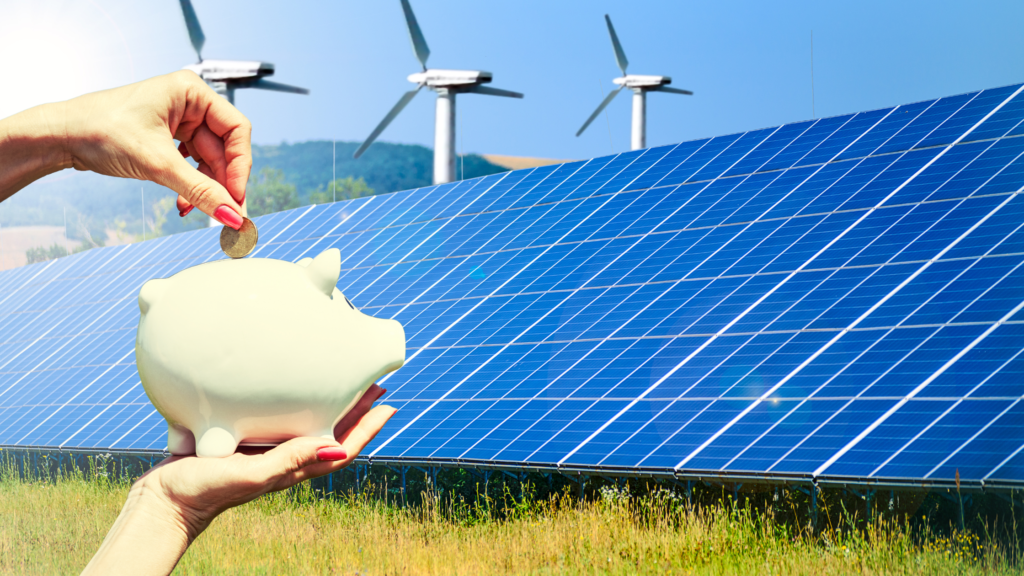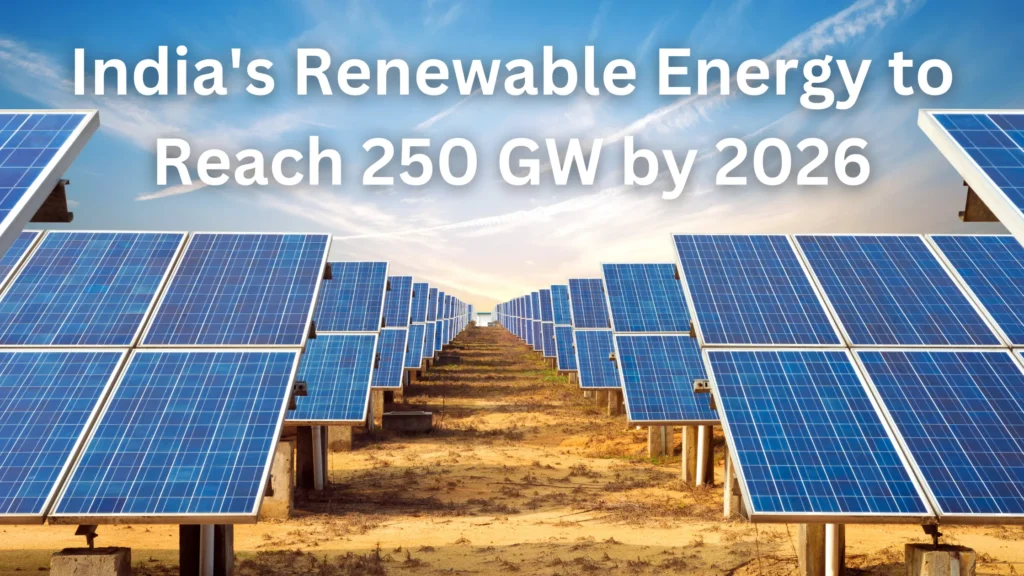The world stands on the brink of a transformative energy revolution. As climate change becomes an ever-pressing issue, there is an urgent need to shift from fossil fuels to cleaner, more sustainable energy sources. Renewable energy technologies such as solar, wind, and hydropower have shown immense promise in meeting global energy demands while reducing carbon emissions. However, their intermittent nature has long posed a challenge. This is where Energy Storage Solutions (ESS) come into play, emerging as a critical component in the widespread adoption of Renewable Energy.
The Growing Need for Renewable Energy
Before delving into the function of Energy Storage Solutions, it is imperative to comprehend the reasons for adopting renewable energy. The leading cause of greenhouse gas emissions contributing to global warming is the combustion of fossil fuels for energy. Many nations have responded to this by setting aggressive goals to raise the proportion of renewable energy in their energy mix.
Renewable energy sources, like wind and solar power, are plentiful and practically limitless. However, they do not come without difficulties. Because solar energy generation depends on sunshine, it cannot occur at night or on overcast days. In a similar vein, wind energy depends on wind speeds, which vary greatly. Because of these inconsistencies, it is challenging to rely entirely on renewables for a consistent energy supply.
The Role of Energy Storage Solutions
Energy Storage Solutions (ESS) are made to hold extra energy produced when renewable energy output is high and release it when demand is high or production is low. This capacity is essential for maintaining grid stability, guaranteeing a steady and dependable energy supply, and maximizing the potential of renewable energy sources.
- Supply and Demand Balance: One of ESS’s main responsibilities is maintaining a healthy balance between the supply and demand of energy. Batteries or other storage devices can store extra energy produced by renewable energy sources when it surpasses demand. This stored energy can be released to satisfy demand during times of high demand or low renewable energy generation, guaranteeing a steady and dependable energy supply.
- System Stability and Resilience: The addition of renewable energy to the system may result in voltage and frequency oscillations, which might cause the grid to become unstable. Energy storage systems (ESS) can contribute to grid stability by delivering quick reaction power during abrupt dips in energy supply or spikes in demand. This decreases the need for costly, carbon-intensive backup power facilities while improving system reliability.
- Enabling Decentralized Energy Systems: Energy storage solutions also make decentralized energy systems possible, in which power generation and storage are dispersed over several places. As a result, the energy system becomes more resilient and depends less on centralized power plants. Decentralized solutions are especially helpful in rural or off-grid locations with little connectivity to the primary grid.
- Supporting Electric cars: Another factor increasing the demand for efficient energy storage systems is the popularity of electric vehicles (EVs). The power demand is predicted to rise sharply as more people switch to electric cars. By storing energy during off-peak hours and supplying it at peak periods, ESS can assist in managing this increasing demand. Furthermore, the batteries used in EVs can store energy on their own and return it to the grid as required.
Types of Energy Storage Solutions
There are now many kinds of energy storage technologies under development, each with unique benefits and drawbacks. Understanding these technologies is required to determine the most effective method for combining ESS with renewable energy systems.
- Batteries: Lithium-ion batteries are the most popular energy storage technology. They are generally simple to deploy, have a high energy density, and have quick reaction times. However, they may be costly, and their ability may decrease with time. To circumvent these restrictions, other battery types, like sodium-sulfur, solid-state, and flow batteries, are being investigated.
- Pumped hydro storage is among the most traditional and well-known types of energy storage. When an excess of energy is generated, water is pumped from a lower reservoir to a higher one. The water is then allowed to flow back down through turbines, releasing the stored energy and producing power. Although pumped hydro storage has a high initial cost and is very effective, it depends on certain geographical circumstances.
- Thermal Energy Storage: This innovation uses heat or cold storage. Concentrated solar power (CSP) facilities are one common solar energy usage. In these plants, excess solar heat is stored in molten salt or other materials and used to generate electricity when sunlight isn’t available. By relocating energy use to off-peak hours, thermal energy storage is another tool utilized in buildings to save heating and cooling expenses.
- Compressed Air Energy Storage (CAES): This technique entails compressing air and storing it in tanks or caves beneath the surface. The compressed air is released when electricity is needed and utilized to power turbines. This technology can store a lot of energy and is not too expensive, although it can be less efficient than other storage systems and requires certain geological formations.
- Flywheel Energy Storage: Flywheels store energy by rapidly rotating a rotor. The generator is powered by the rotor, which is slowed down to release energy. Flywheels are perfect for grid stabilization because of their high power output and quick reaction times. They are better suited for short-duration storage, though, as their energy storage capacity is smaller than other techniques.
Challenges and Opportunities in Energy Storage Solutions
Although energy storage technologies promise great promise for promoting the use of renewable energy, a number of obstacles need to be overcome in order to reap their rewards fully.
- Cost: One of the primary obstacles to the broad use of energy storage technologies, notably batteries, is their high cost. Even though costs have been going down, more drops are required to make ESS widely commercially feasible. Cost-cutting measures must include economies of scale, ongoing research and development, and supportive legislation.
- Energy Density and Efficiency: Enhancing storage systems’ energy density and efficiency is essential to enhancing their efficacy. Greater energy density allows for more energy storage in a given area, which lowers the physical footprint and expense of storage devices. By maximizing the amount of stored energy that can be recovered and utilized, efficiency increases help to reduce losses.
- Environmental Impact: Although energy storage systems (ESS) can facilitate the switch to renewable energy sources, it’s crucial to consider the storage technologies’ environmental effects. For instance, the manufacture and disposal of batteries may have serious environmental repercussions. Reducing ESS’s environmental impact depends on the development of more environmentally friendly materials and recycling techniques.
- Regulatory and Market Barriers: These obstacles frequently make it more challenging to integrate energy storage into the grid. In numerous areas, the regulatory structure falls short of acknowledging or compensating the advantages of energy storage systems (ESS), like peak shaving and grid stability. Market mechanisms and policy reforms that fully compensate energy storage are required to promote investment and deployment.
- Grid Integration: Improving the current grid infrastructure when integrating energy storage devices might be difficult and expensive. Coordination among utilities, grid operators, and storage suppliers is important to guarantee seamless integration and optimize the advantages of energy storage systems (ESS).
The Future of Energy Storage and Renewable Energy Adoption
Notwithstanding the difficulties, energy storage technology has a bright future. Technology developments, falling prices, and encouraging regulations are anticipated to propel the energy storage market’s explosive expansion. The rising use of renewable energy sources and the requirement for grid stability are expected to fuel the growth of the worldwide energy storage market, which is expected to reach 3,204.9 GW by 2050 from 20.8 GW in 2020.
Energy storage will be essential in facilitating the broad use of renewable energy sources as they become more accessible and economical. By addressing the intermittent nature and unpredictability of renewable sources, energy storage systems (ESS) can offer a steady and dependable energy supply, lowering our dependency on fossil fuels and slowing global warming.
Furthermore, the development of new storage technologies has the potential to change the energy landscape completely. Examples of these technologies are hydrogen storage and next-generation batteries. Thanks to these advancements, even higher energy density, efficiency, and sustainability are possible, and renewable energy may eventually overtake all other power sources globally.
Conclusion
Energy Storage Solutions are the secret to realizing the full promise of renewable energy adoption. ESS can aid in the shift to a cleaner, more sustainable energy future by supplying a steady and dependable energy source, stabilizing the grid, and facilitating decentralized energy systems. Despite obstacles, more funding for technology, research, and legislative changes will open the door to a world powered entirely by renewable energy sources. We are at the cusp of a revolution in energy, and Energy Storage Solutions are critical to creating a sustainable and prosperous future for all. Their significance cannot be emphasized.


